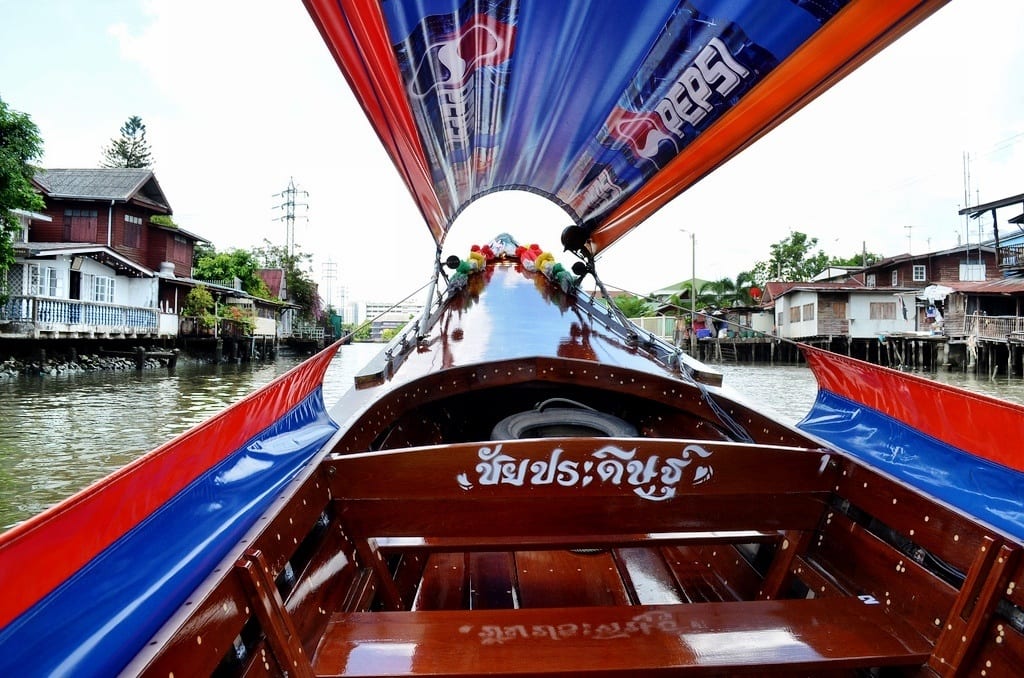Imagine yourself venturing into the heart of Thailand, away from the bustling cities and popular tourist attractions. Picture yourself meandering through a hidden paradise, where charming waterways wind their way through picturesque landscapes. In this enchanting exploration, you will uncover the mesmerizing labyrinth of canals known as the Khlongs. Discover the rich culture, delicious cuisine, and breathtaking scenery that await as you embark on a journey to unlock the secrets of Thailand’s alluring canals.
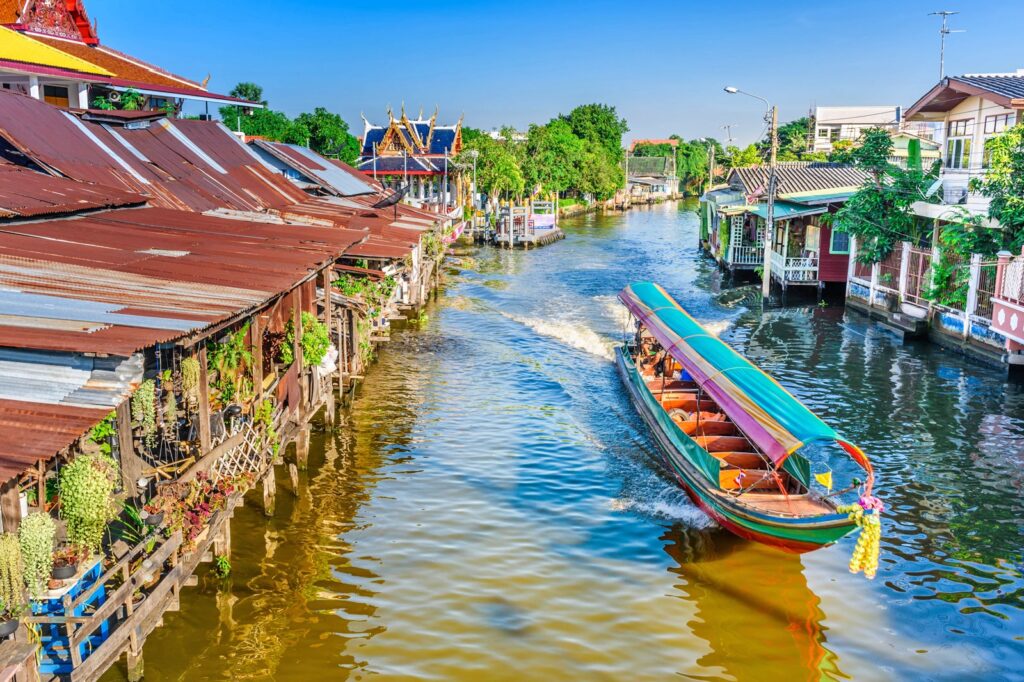
The Significance of Khlongs in Thailand
Introduction to Khlongs
In Thailand, the intricate network of canals, known as “khlongs,” is a vital part of the cultural and historical fabric of this beautiful Southeast Asian country. These canals, which have been used for centuries as transportation routes and for irrigation purposes, not only serve practical purposes but also offer a unique and enchanting experience for visitors.
Historical Significance
The history of khlongs in Thailand dates back centuries and is closely intertwined with the country’s development. These canals were originally dug by hand during the Ayutthaya period (1351-1767) as a means of connecting rivers and facilitating trade and transportation. They played a crucial role in the economic growth of the region, allowing goods to be transported easily between different areas.
Importance in Thai Culture
Khlongs hold immense cultural significance for the Thai people. They are often referred to as the “lifeblood” of Thailand, as they have sustained generations of communities along their banks. These canals provided water for irrigation and agriculture, leading to the flourishing of Thai rice cultivation. The khlongs also served as a vital means of transportation, connecting villages, towns, and cities, allowing people to move easily and trade goods.
Exploring the Popular Khlongs in Thailand
Khlong Saen Saep
One of the most popular khlongs in Thailand is Khlong Saen Saep, located in Bangkok. Meandering for approximately 18 kilometers, this canal is a bustling waterway, offering a glimpse into the daily life of the city’s residents. Traveling along Khlong Saen Saep on a long-tail boat or public ferry provides an opportunity to observe the vibrant cityscape and witness how the locals navigate through their waterways.
Khlong Phasi Charoen
Khlong Phasi Charoen, also situated in Bangkok, is another well-known khlong worth exploring. This canal flows through the city’s western suburbs and offers a tranquil escape from the bustling metropolitan atmosphere. Along its banks, visitors can admire the serene beauty of nature and catch glimpses of traditional Thai wooden houses.
Khlong Bang Lamphu
Located in the heart of Bangkok’s historic district, Khlong Bang Lamphu takes visitors on a journey back in time. This canal is famous for its old-world charm, with beautiful traditional architecture lining its banks. Exploring Khlong Bang Lamphu on a long-tail boat is a delightful way to immerse oneself in the rich history of the area and witness the enchanting blend of old and new.
Khlong Lat Phrao
Khlong Lat Phrao, situated in northeastern Bangkok, is an ideal destination for those seeking a peaceful and serene experience. The canal’s banks are adorned with lush greenery, creating a picturesque setting. Traveling along Khlong Lat Phrao allows visitors to escape the bustling city and embrace the calming tranquility of nature.
Khlong Chak Phra
For a glimpse into the vibrant local life in Bangkok, a visit to Khlong Chak Phra is a must. This canal is located in the northern part of the city and is known for its bustling floating markets. Exploring the floating markets along Khlong Chak Phra offers a unique experience of immersing oneself in the vibrant colors, aromas, and flavors of traditional Thai street food and handicrafts.
Khlong Bangkok Noi
Khlong Bangkok Noi, situated on the western side of the Chao Phraya River, allows visitors to witness the historical and cultural significance of the canals in Bangkok. Traveling along this khlong unveils the architectural wonders of the city, with magnificent temples, traditional Thai houses, and local communities showcasing their way of life.
Khlong Khum Daeng
Located in the eastern part of Bangkok, Khlong Khum Daeng offers a glimpse into the rural side of the city. This canal meanders through agricultural areas, providing visitors with an opportunity to witness traditional farming practices and experience the rustic charm of Thai countryside living.
Khlong Bang Sue
Khlong Bang Sue, situated in the northern part of Bangkok, is a canal known for its vibrant ambiance and bustling local communities. Exploring Khlong Bang Sue allows visitors to witness the daily activities of locals along the canal, from traditional fishing to boat-building. This khlong provides an authentic glimpse into the local way of life.
Khlong Bang Kho Laem
Khlong Bang Kho Laem, located in the southern part of Bangkok, offers a unique mix of urban and natural beauty. Traveling along this canal reveals stunning city views, as well as lush greenery and parks. Khlong Bang Kho Laem is a haven for nature enthusiasts, providing a peaceful respite from the city’s energetic atmosphere.
Khlong Song Wat
Khlong Song Wat, located in Ayutthaya, is a historical canal that holds immense cultural significance. This canal played a crucial role in the transportation of goods during the Ayutthaya period and is surrounded by ancient ruins and temples. Exploring Khlong Song Wat allows visitors to immerse themselves in the rich history and architectural wonders of Ayutthaya.
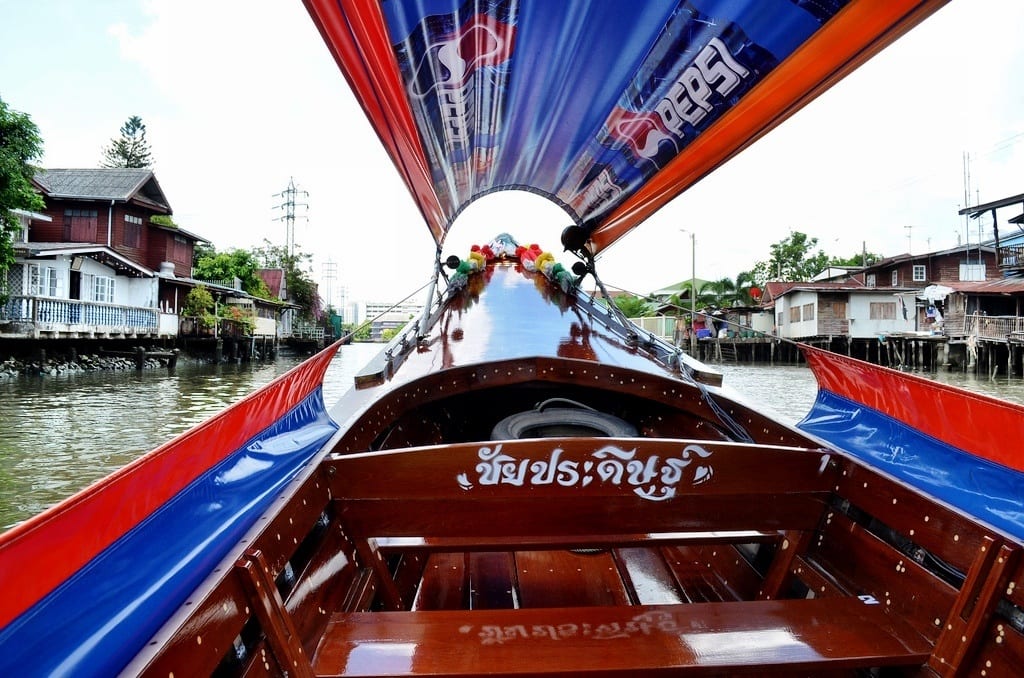
The Beauty and Charm of Thailand’s Khlongs
Picturesque Views
One of the most captivating aspects of exploring Thailand’s khlongs is the picturesque views they offer. As visitors glide through the calm waters, they are greeted with stunning vistas of lush greenery, vibrant flora, and the ever-changing cityscape. Khlongs provide a unique vantage point to appreciate the beauty of Thailand’s landscapes.
Traditional Wooden Houses
Along the banks of the khlongs, traditional wooden houses can be seen, adding to the charm and nostalgia of these waterways. These houses often feature intricate architectural designs and are adorned with vibrant colors and decorative elements. Observing these traditional houses offers a glimpse into the rich cultural heritage of Thailand.
Floating Markets
Thailand’s khlongs are renowned for their floating markets, which are bustling hubs of activity. These markets allow visitors to immerse themselves in the vibrant and lively atmosphere of Thai culture. Customers can browse a wide range of goods, including fresh produce, street food, traditional crafts, and souvenirs.
Lush Greenery
One of the most remarkable elements of Thailand’s khlongs is the lush greenery that surrounds them. As visitors travel along the canals, they are treated to a verdant landscape, with tropical plants, palm trees, and colorful flowers creating a refreshing and serene atmosphere.
Serene Atmosphere
The tranquility that permeates the khlongs adds to their charm. Away from the hustle and bustle of the city, these canals offer a peaceful respite. The gentle lapping of the water, the chirping of birds, and the rustling of leaves create a soothing and serene environment, allowing visitors to relax and unwind.
Historical Architecture
The historical architecture that lines the banks of Thailand’s khlongs is awe-inspiring. Temples, traditional Thai houses, and other architectural wonders can be found along these waterways. These architectural gems serve as a reminder of Thailand’s rich cultural heritage and offer visitors a glimpse into the country’s past.
Exploring Khlongs in Major Thai Cities
Bangkok
The vibrant capital city of Thailand, Bangkok, is home to numerous khlongs that offer a unique perspective on the city. From the bustling streets of Khlong Saen Saep to the historical charm of Khlong Bang Lamphu, exploring Bangkok’s khlongs allows visitors to witness the city’s diverse facets and immerse themselves in its vibrant culture.
Ayutthaya
Ayutthaya, with its rich historical significance, is another city where khlongs play a prominent role. Khlong Song Wat in Ayutthaya is a must-visit, as it transports visitors back in time to the era of ancient temples and ruins. Exploring the khlongs in Ayutthaya offers a glimpse into the city’s glorious past and its cultural heritage.
Chiang Mai
While Chiang Mai is known for its majestic temples and traditional markets, it also has its fair share of charming khlongs. Khlong Chak Phra in Chiang Mai is a bustling canal lined with vibrant floating markets, showcasing the city’s rich local culture. Exploring the khlongs in Chiang Mai provides an opportunity to experience the city’s unique blend of urban and rural life.
Phuket
Phuket, a popular tourist destination known for its pristine beaches, also boasts several khlongs worth exploring. These canals offer visitors a break from the crowded beaches, immersing them in a world of serene waterways surrounded by lush greenery. Khlong Bang Kho Laem in Phuket is particularly renowned for its scenic beauty and tranquil atmosphere.
Krabi
With its stunning limestone cliffs and crystal-clear waters, Krabi is a paradise for nature lovers. The khlongs in Krabi offer a different perspective on the region’s natural beauty. Visitors can embark on boat tours along the khlongs, venturing into secluded areas and hidden lagoons, unearthing the true wonders of Krabi’s landscapes.

Experiencing Thai Culture Along the Khlongs
Traditional Thai Cuisine
Exploring Thailand’s khlongs provides ample opportunities to indulge in traditional Thai cuisine. Along the banks of the canals, visitors can find floating markets and street food stalls, offering a wide array of delicious dishes. From aromatic curries and spicy stir-fries to refreshing tropical fruits and sweet treats, the culinary delights found along the khlongs are bound to tantalize the taste buds.
Local Handicrafts
Thailand is renowned for its intricate handicrafts, and the khlongs are the perfect place to discover and purchase these unique creations. Traditional Thai craftsmanship can be seen in the form of handmade jewelry, textiles, ceramics, and wooden carvings. Exploring the khlongs allows visitors to support local artisans and take home a piece of Thailand’s cultural heritage.
Thai Traditional Houses
The khlongs are lined with traditional Thai houses, known for their distinctive architecture and intricate details. Visitors can observe these charming houses, often adorned with colorful facades, ornate roofs, and intricate woodwork. Some houses even offer the opportunity for visitors to stay overnight, providing a truly immersive experience of Thai culture.
Authentic Thai Festivals
Thailand is renowned for its vibrant festivals, and the khlongs are no exception when it comes to celebrating these cultural events. Along the canals, visitors may witness colorful boat processions, where locals adorn their boats with decorative lights and pay homage to the spirits. These festivals provide a unique opportunity to experience Thai customs and traditions firsthand.
The Role of Khlongs in Thai Tourism
Attraction for Tourists
Thailand’s khlongs are a significant attraction for tourists, offering a distinct and memorable experience beyond the typical tourist destinations. The allure of the khlongs lies in their historical and cultural significance, providing visitors with a deeper understanding of Thai heritage and a chance to escape the usual tourist crowds.
Boat Tours and Excursions
Exploring the khlongs through boat tours and excursions is a popular activity among tourists. These tours allow visitors to relax and immerse themselves in the beauty of the canals, while knowledgeable guides share insights into the history, culture, and significance of the khlongs. Boat tours offer a unique perspective, providing up-close encounters with the local communities and their way of life.
Cultural Experiences
The khlongs offer a wealth of cultural experiences, allowing visitors to interact with locals, witness traditional practices, and immerse themselves in Thai customs. From sampling street food at floating markets to participating in local festivals, exploring the khlongs provides an authentic and enriching cultural experience.
Sustainable Tourism Practices
Thailand’s khlongs have gained attention from sustainable tourism advocates, who recognize the importance of preserving these natural and cultural treasures. Responsible tourism practices, such as supporting local communities, reducing waste, and respecting the environment, are encouraged to ensure that the khlongs can be enjoyed by future generations.
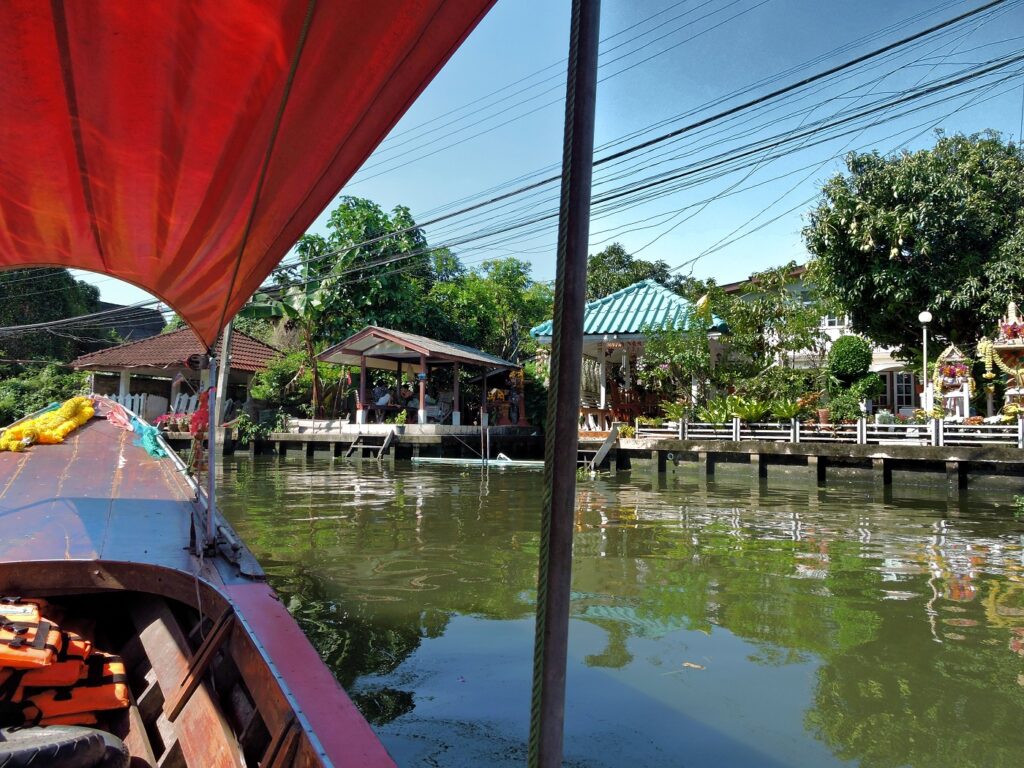
Tips for Exploring Khlongs in Thailand
Choosing the Right Boat Tour
When exploring the khlongs, it is important to choose a reputable boat tour company that prioritizes safety and cultural sensitivity. Reading reviews and seeking recommendations can help ensure a positive and truly immersive experience.
Best Time to Visit
Thailand’s climate plays a significant role in the overall experience of exploring the khlongs. The best time to visit is during the dry season, typically from November to February, when the weather is pleasant, and rainfall is minimal. Avoiding the rainy season will ensure a more enjoyable experience along the canals.
Wearing Appropriate Clothing
Respecting local customs and traditions is crucial when exploring the khlongs. Visitors should dress modestly, covering their shoulders and knees, especially when visiting temples or traditional communities.
Respecting Local Customs
As guests in Thailand, it is important to respect the local customs and traditions along the khlongs. This includes removing shoes when entering temples, refraining from touching sacred objects, and being mindful of cultural norms and practices.
Hygiene and Safety Precautions
To ensure a safe and hygienic experience, it is advisable to carry hand sanitizer and maintain basic personal hygiene practices. It is also recommended to drink bottled water and avoid consuming raw or undercooked food from street vendors.
Preserving and Protecting Thailand’s Khlongs
Conservation Efforts
Efforts are underway to preserve and protect Thailand’s khlongs. These initiatives include the restoration of historical buildings, the establishment of conservation programs, and raising awareness about the cultural and ecological significance of the canals. By valuing and safeguarding the khlongs, their beauty and importance can be preserved for future generations.
Managing Urban Development
Balancing the needs of urban development with the preservation of the khlongs is a challenge faced by authorities in Thailand. Urban planning strategies are being implemented to ensure that the canals are not overlooked in the midst of rapid development, preserving their historical integrity and ecological value.
Combating Pollution
As urbanization increases, pollution poses a threat to the health of Thailand’s khlongs. Measures are being taken to combat pollution, including implementing proper waste management systems and raising awareness about the importance of keeping the canals clean and free from pollution.
Community Involvement
Engaging local communities is essential in preserving and protecting the khlongs. Community-led initiatives, such as canal cleanup campaigns and educational programs, foster a sense of ownership and responsibility among residents, ensuring the long-term sustainability of these cherished waterways.
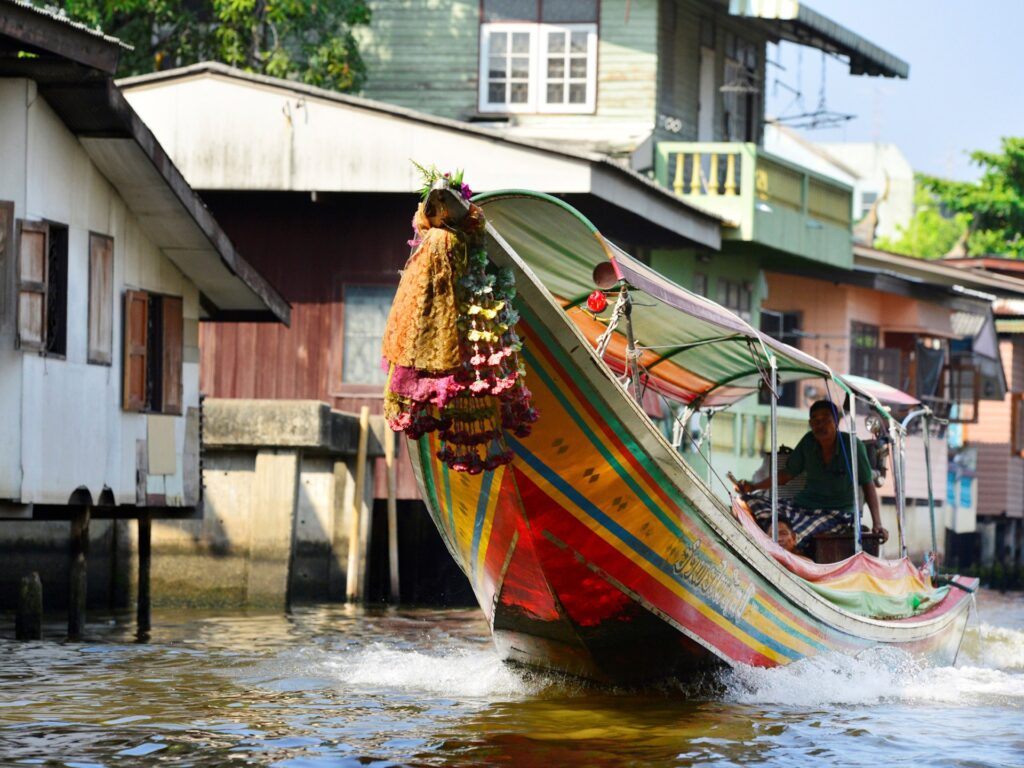
The Future of Thailand’s Khlongs
Preserving Traditional Practices
As Thailand embraces modernity, it is crucial to preserve traditional practices associated with the khlongs. By passing down knowledge of canal navigation, boat-building, and traditional agricultural techniques, these rich traditions can be kept alive for future generations.
Balancing Tourism and Sustainability
Managing tourism and balancing it with sustainability is a key challenge that lies ahead. Implementing responsible tourism practices, such as controlling visitor numbers and promoting sustainable transportation options, will ensure that the khlongs can continue to be appreciated without compromising their ecological and cultural integrity.
Infrastructure Development
Sustainable infrastructure development is crucial in safeguarding the khlongs. This includes maintaining and improving transportation networks, ensuring proper waste management, and protecting the water quality of the canals. Thoughtful infrastructure development will contribute to the preservation and accessibility of the khlongs.
Promoting Cultural Heritage
Thailand’s khlongs are a testament to the country’s rich cultural heritage. Promoting and celebrating this heritage through cultural events, festivals, and educational programs will not only create a deeper appreciation for the khlongs but also empower local communities and facilitate cultural exchange.
Conclusion
Thailand’s khlongs are not just waterways; they are a window into the history, culture, and natural beauty of the country. Exploring the khlongs allows visitors to go beyond the typical tourist attractions and immerse themselves in the authentic Thai way of life. With their historical significance, stunning landscapes, and cultural richness, the khlongs of Thailand are truly an enchanting labyrinth waiting to be explored.
